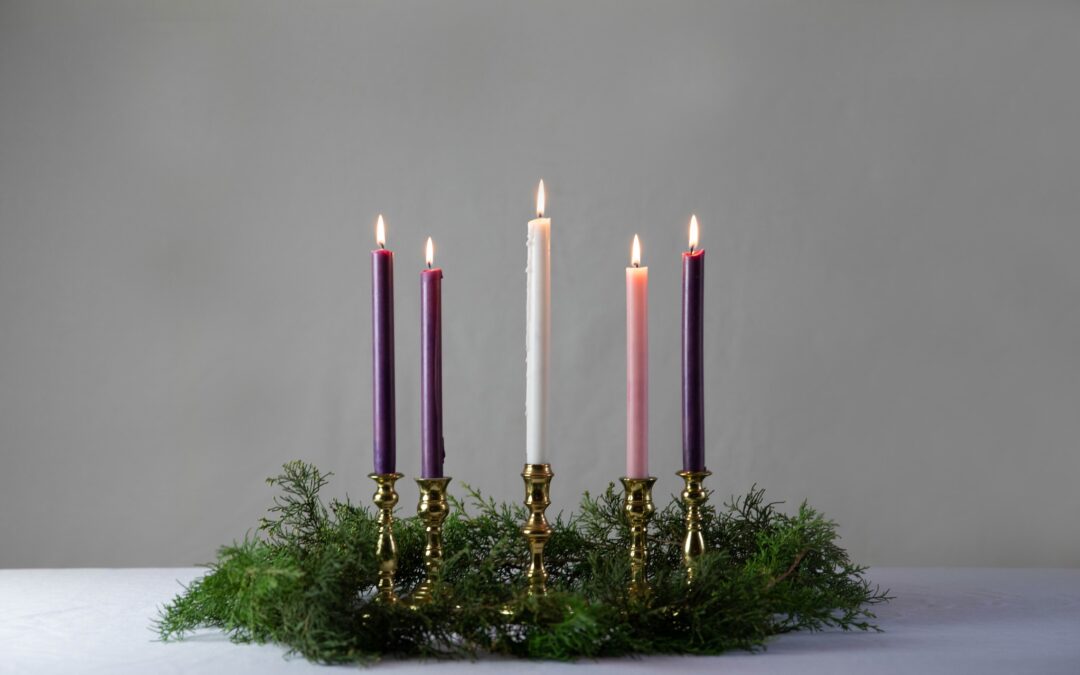Growing up, my family cherished tradition, something that rang true most of all during the Christmas season. Our house would be filled with aunts, uncles, and cousins every Christmas Day for a huge celebration. Uncle Eddie always brought his Mexican dip to liven the appetizer table. Cousin Janet wore her sparkly Christmas tree pin every year. Uncle John fell asleep in an armchair after dinner. The dessert table always included “icebox cake,” a favorite recipe from Grandma.
I cherish my memories of those traditions. I’m willing to bet you have your childhood traditions surrounding Christmas.
Then my husband and I had our first child and we found ourselves in an entirely new position. No longer did I have the all-too-familiar role of daughter within my parents’ household; now I held the role of mother and wife in my own home. Suddenly, the rules changed and we faced a perplexing situation: there was no tradition.
Do we open presents with wild abandon or take turns? Is it scrambled eggs and bacon for Christmas breakfast or French toast? Do we attend the children’s Mass or midnight Mass?
In a way, creating traditions presented a supremely exciting opportunity. A blank slate awaited us: we could shape and create it to best fit our family. If we want to open presents while listening to the Beach Boys and wearing Hawaiian shirts … we could do that! (Though we don’t!)
What is it about Christmas traditions that resonates so strongly in us?
I think that something exists within the heart of each of us that craves tradition. We seek out and appreciate the familiar repetition that provides a sense of comfort. A holy priest we know once said in a homily, “Repetition is humanity’s way of approximating eternity.”
Our hearts are created for eternity and so, consciously or unconsciously, that’s what we try to recreate.
Tradition is at the very heart of our Christian and Catholic faith: written Tradition (Sacred Scripture) and unwritten Tradition (everything that has been passed down orally). In the beginning, the Church only had unwritten Tradition. Just consider: Jesus ascended into Heaven around 33 AD, but the Gospel of Mark (the first one composed) didn’t appear until around 65-70 AD. So that’s about thirty years with no written Gospel! People learned about Christ from word of mouth as Christians met together in homes and shared the Eucharist and teachings of Our Lord. Eventually, some of Sacred Tradition was written down and this became the Bible as we know it.
The Christian faith has been handed down through the generations, the Holy Spirit moving, breathing, sanctifying, inspiring, and directing as the Body of Christ prays, witnesses, evangelizes, and worships … Tradition.
The Church has Tradition and so, too, should our domestic churches. Our family traditions at Christmas usually involve things like favorite food dishes or Christmas movies, but these traditions should go deeper as well. After all, they are our way of handing on the real meaning of Christmas to our children.
Here are some of my family’s cherished Christmas traditions … Perhaps you will find something that your family would like to try!
- We put up our Christmas tree every First Sunday of Advent, but we don’t decorate it. Instead, we use our Christmas tree as a Jesse tree. Each day of Advent we add one Jesse tree ornament to the tree, reading in Scripture how God so lovingly prepared the world for the Incarnation. Then on Christmas Eve we fully decorate the tree with all the other ornaments.
- We have an Advent wreath on our dining room table and light it each night as we say our grace before dinner. However, each Sunday of Advent, we turn off all the lights in the house and sing “O Come, O Come, Emmanuel.” Something about the growing light of the wreath in the darkness really reminds us that Christ, the Light of the World, is indeed coming.
- We celebrate the many saint feast days during these December days: gold chocolate coins in the children’s shoes on St. Nicholas Day (December 6), tacos for dinner on the feast of Our Lady of Guadalupe (December 12), and a candlelight, cinnamon roll breakfast for St. Lucy Day (December 13).
- On Christmas morning itself, the first thing we do is place the infant Jesus in the manger and sing “Happy Birthday” to Him.
- Our children receive three presents from us under the tree: gold (the toy or item they want most), frankincense (something to help their souls, their interior life), and myrrh (something for the body, such as clothes).
No matter how many years have passed, our children never tire of these traditions. And neither do I.
When your children are adults, what do you want them to remember about your family’s Christmas traditions? Let us pray that what we choose to do now will form our children’s hearts and souls so that, when they are adults, they will pass on the same faith, joy, wonder, and love for the Christ Child on His birthday.


